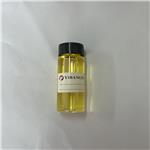Chemical Properties
| Boiling point | 211 °C(lit.) |
| Density | 0.89 g/mL at 25 °C(lit.) |
| refractive index | n20/D 1.46 |
| FEMA | 2618 | LAVANDIN OIL (LAVANDULA HYBRIDA) |
| Flash point | 74 °C |
| storage temp. | 2-8°C |
| form | liquid |
| Odor | at 100.00 %. herbal sweet camphoreous lavandin flower |
| Odor Type | herbal |
| optical activity | [α]25/D -4.03° |
| Substances Added to Food (formerly EAFUS) | LAVANDIN, OIL |
| FDA 21 CFR | 182.20; 582.20 |
| FDA UNII | 9RES347CKG |
| EPA Substance Registry System | Lavandin oil (8022-15-9) |
Safety
| Symbol(GHS) |

|
| Signal word | Warning |
| Hazard statements | H315-H317-H412 |
| Precautionary statements | P261-P272-P280-P302+P352-P333+P313-P321-P363-P501-P264-P280-P302+P352-P321-P332+P313-P362-P273-P501 |
| WGK Germany | 2 |
| RTECS | OF6097500 |
| Toxicity | Both the acute oral LD50 value in rats and the acute dermal LD50 value in rabbits exceeded 5 g/kg |


